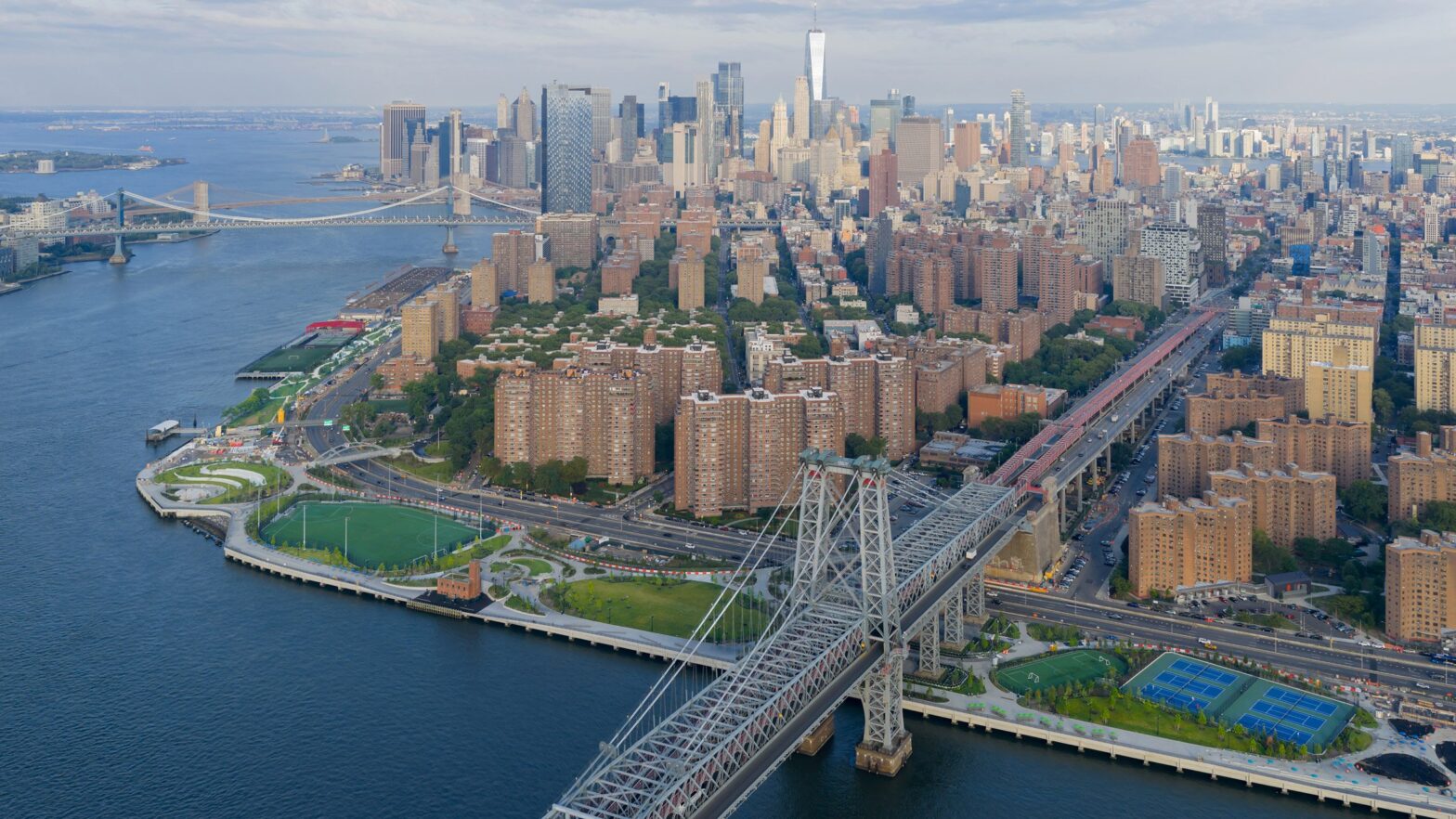Architecture firm BIG has announced a milestone in the ongoing construction of parks along New York's East River with a wood-clad building with integrated solar infrastructure.
The Solar One Environmental Education Center is a two-story, wood-clad building in Stuyvesant Cove Park designed to harvest solar energy and store it for emergencies.
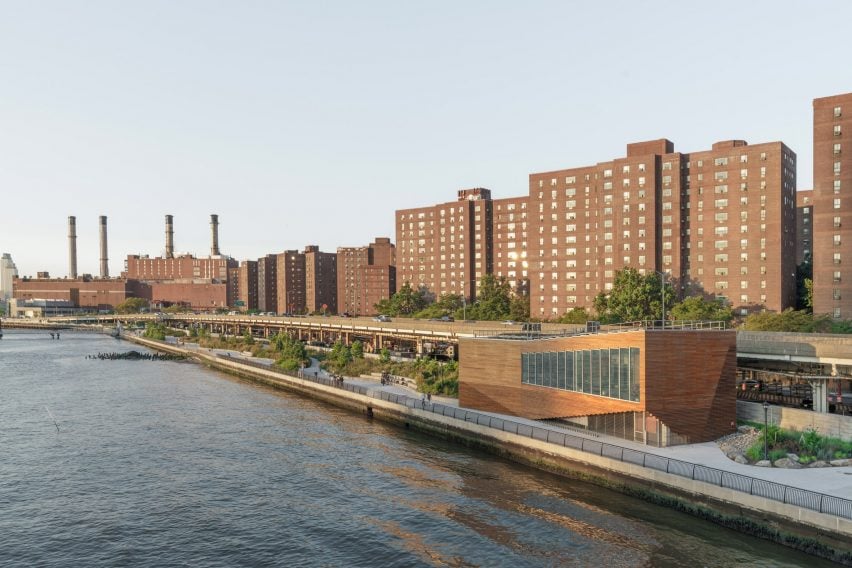
According to the studio, the 595 square meter structure is the city's “first building to include ground-mounted solar photovoltaics and battery storage,” meaning it is the first of its kind to include this energy infrastructure as part of the plan and will not be added later as an upgrade.
Featuring a concrete base and lightweight steel structure, it features environmental program classrooms set above the floodplain with floor-to-ceiling windows overlooking the river that rise parallel to the building's slight rise in height.
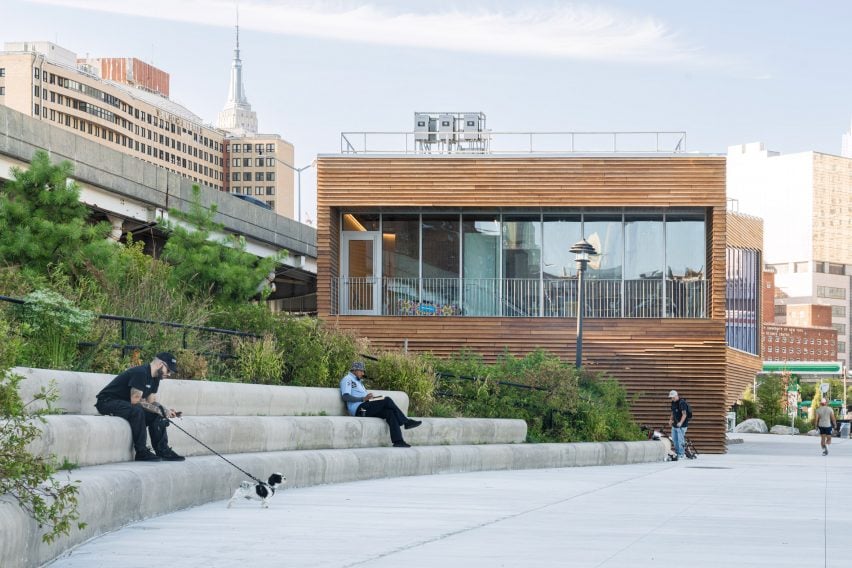
There is a grate at ground level to allow water to flow freely into and out of the building during flooding.
It replaces the existing building, which BIG said was a “vital refuge” for residents during the city's flooding when Hurricane Sandy devastated New York City in 2012.
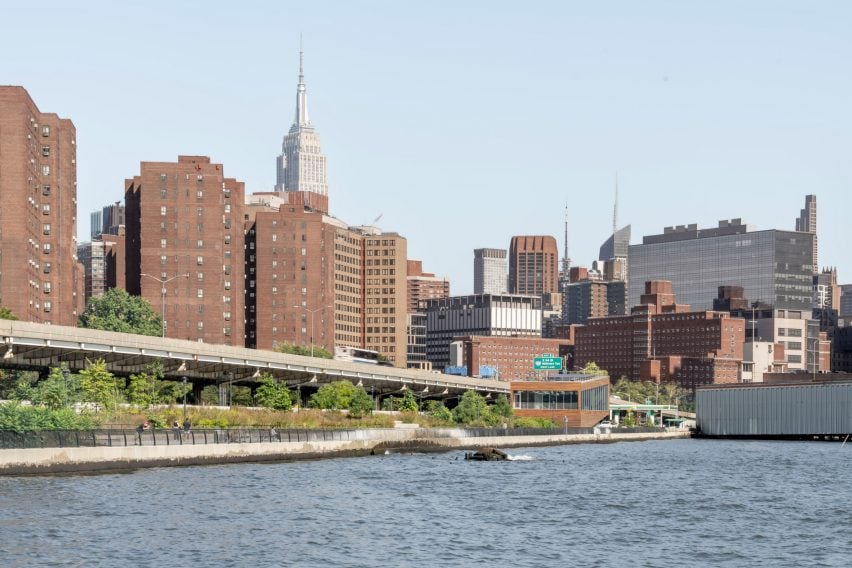
“The Solar One Environmental Education Center is both a model for modern flood protection and a learning tool for climate change adaptation,” BIG said, adding that the ability to store energy should allow the building to remain open during future power outages.
It is part of several sections of renovated parks along Manhattan's East River that opened as part of the ongoing East Side Coastal Resiliency Project (ESCR), which both provides public space for residents and creates buffers against future storms.
The parks run between the FDR Freeway and the river and surround the Lower East Side. They extend along the river in sections, with the most significant recent work completed around the Williamsburg Bridge. The Solar One center is located at the far northern end of the project in what is known as Stuyvesant Cove Park.
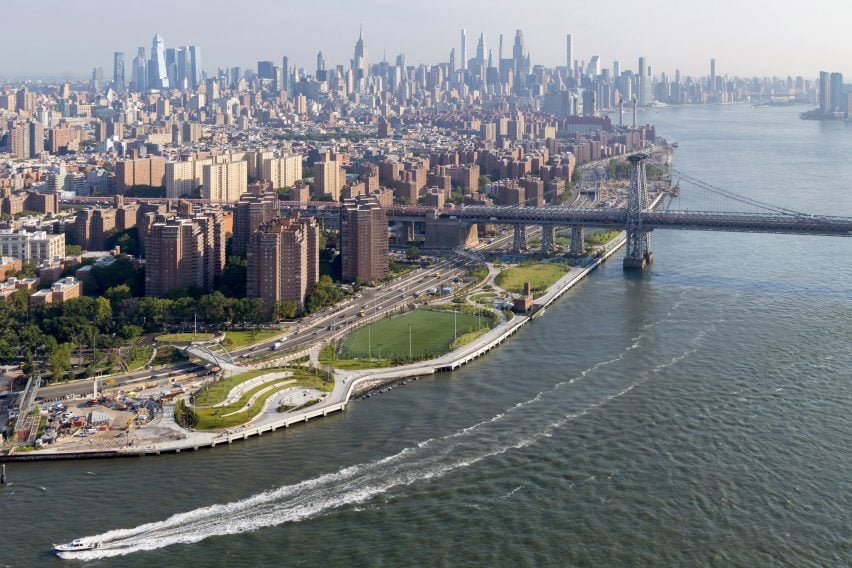
“With the reopening of East River Park, we see the first physical manifestation of a decades-long vision: an archipelago of parks forming an elevated, rolling new landscape – a 'parkipelago,' if you will,” said BIG founder Bjarke Ingels.
“Each green island is dedicated to a use and character decided by the community. Instead of separating the city from the waterfront, we designed a public realm that invites people with new connections across FDR, transforming flood protection into a tapestry of everyday experiences.”
“The result is infrastructure that not only strengthens but also enhances the city's coastline. It protects, connects and inspires – proof that the future of our cities can be both safe from flooding and full of life.”
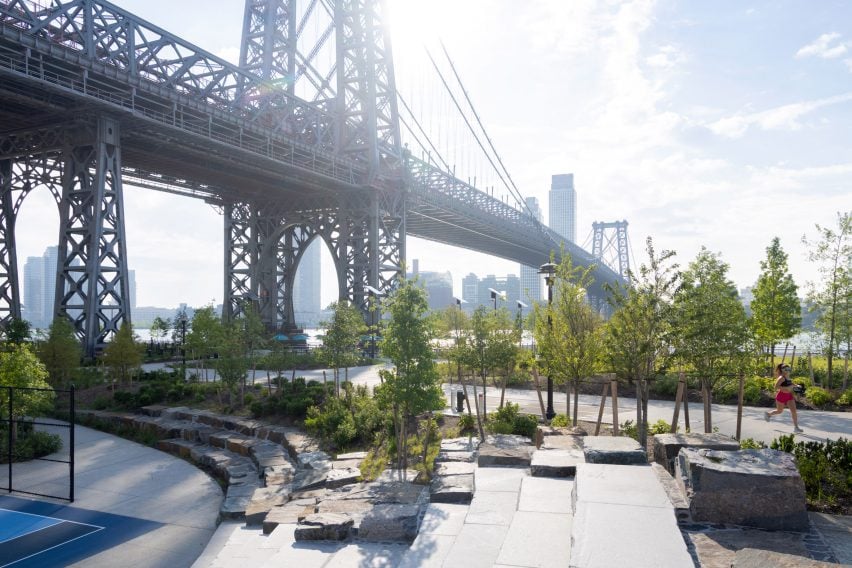
BIG worked with the City of New York and landscape studios MNLA and ONE Architecture & Urbanism to create the park systems, which include sports fields, tracks and landscaped parks, all integrated with flood control technology.
Flood walls, sliding gates, bridging embankments and elevated parkland are all features of the 3.5 kilometer long parkland. The recent completion marks the second major phase of the park to open. Further completions are planned for the coming years.
Hundreds of trees and plants were selected by MNLA to reduce the risk of flooding and create a pleasant environment for locals.
“Parking areas will be traversed by a continuous, widened waterfront promenade, providing a variety of seating options and a shared cycle and pedestrian path that winds through the upland landscape,” MNLA said.
“This newest section of East River Park is both a destination and a testament to how important infrastructure, community and nature can combine to provide lasting, diverse benefits to the public.”
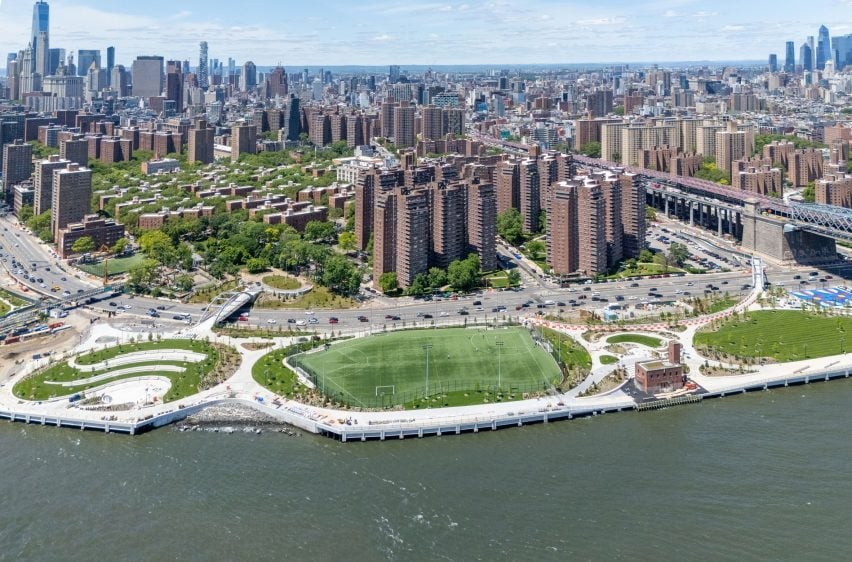
BIG is currently working with the City of New York on additional resilience parks in the southern end of Manhattan, part of a master plan the studio developed in 2014.
Meanwhile, Thomas Phifer and partners have completed an AECOM pavilion in another robust park in Lower Manhattan.
Project evidence:
Resilience of the eastern side of the coast Employees: MNLA, ONE Architecture & Urbanism, AKRF & KSE, Arcadis, Jacobs, Hardesty Hanover, Siteworks, Wesler Cohen, Hazen & Sawyer, Pentagram, Hortus Environmental Design, FHI Studio, Starr Whitehouse, James Lima Planning + Development
Solar One Environmental Education Center cEmployees: TYLin, AKRF, Cosentini Associates, MNLA, KM Associates, Cerami Associates, HLB, Lerch Bates, CCI, Construction Specification Inc., Socotec
